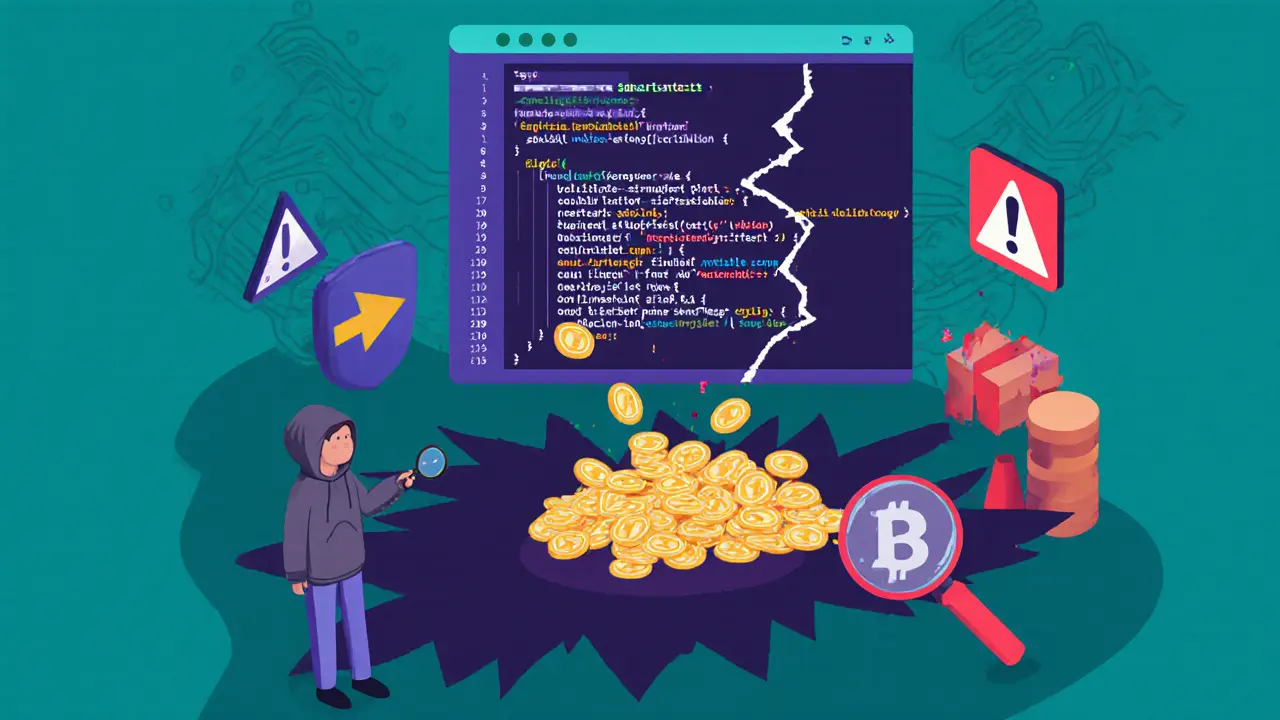Smart Contract Security: Protect Your Crypto from Exploits and Scams
When you interact with a smart contract, a self-executing program on a blockchain that runs without human intervention. Also known as on-chain code, it handles everything from token swaps to staking rewards — but if it’s broken, your money vanishes. Unlike traditional apps, you can’t patch a smart contract after it goes live. One line of bad code can drain millions. That’s why smart contract security, the practice of finding and fixing flaws in blockchain code before they’re exploited isn’t optional — it’s survival.
Most attacks don’t come from hackers breaking into wallets. They target the code itself. Think of it like a vending machine that’s supposed to give you a soda when you insert cash. But if the machine doesn’t check if you actually paid, someone could just press the button and walk away with free drinks. That’s what happened to The DAO in 2016 — a flaw let attackers drain $60 million. Since then, we’ve seen similar disasters with DeFi platforms, cross-chain bridges, and even NFT minting contracts. Smart contract audits, third-party reviews by security experts who test code for weaknesses are the first line of defense. But audits aren’t foolproof. Some firms cut corners. Others miss logic errors hidden in complex code. That’s why you also need to look at blockchain security, the broader ecosystem of tools, practices, and protocols that protect on-chain assets — like multi-sig wallets, time locks, and decentralized governance.
What you’ll find in these posts isn’t theory. It’s real-world damage reports. You’ll see how Zeddex Exchange vanished without audits, how Secret Network encrypts contracts by default to block data leaks, and why a flawed liquidity pool on PancakeSwap V3 could’ve emptied user funds. You’ll learn how HSMs protect private keys, how immutability can backfire when bugs are locked in forever, and why some airdrops are just traps disguised as free money. This isn’t about fear. It’s about awareness. If you’re using DeFi, trading tokens, or holding crypto assets, you’re already interacting with smart contracts. The question isn’t whether they’re secure — it’s whether you know how to tell the difference between a safe one and a ticking bomb.
Code Review Best Practices for Blockchain: How to Prevent Costly Vulnerabilities
Learn the essential code review practices for blockchain to prevent costly vulnerabilities. Discover why manual review is irreplaceable, how to use automated tools effectively, and what separates a secure contract from a disaster.
Details +